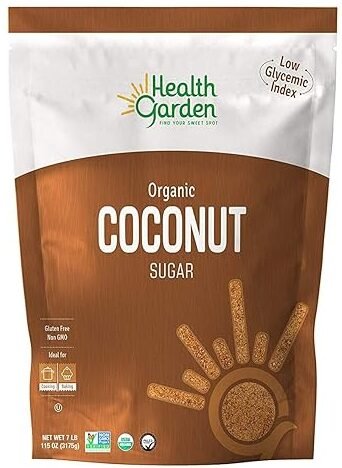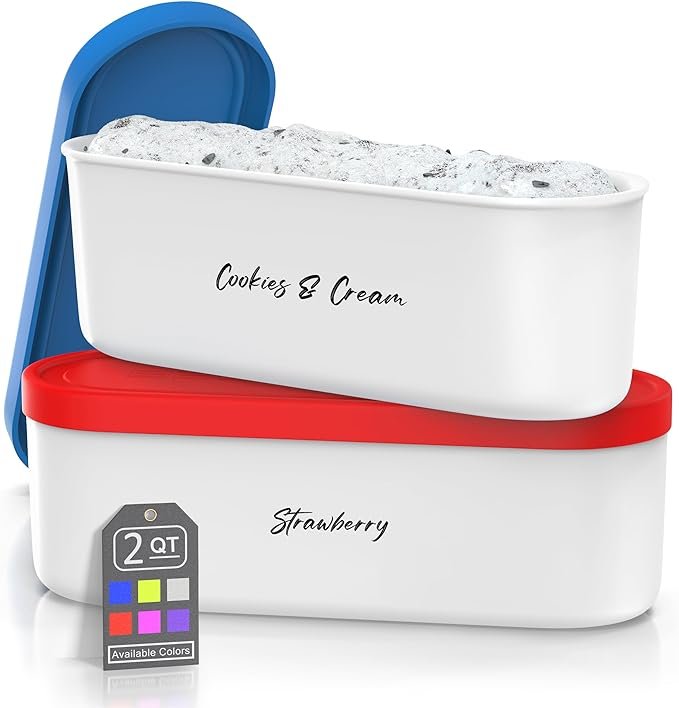Introduction to Gluten Free and Lactose Free for VIP Luxury Ice Cream
This type of ice cream represents a constantly growing trend in the gastronomic field, offering a unique and exquisite experience to those seeking to satisfy their dietary needs without sacrificing flavor or quality. But what makes ice cream a luxury delight? The answer lies in several key factors that distinguish these products from regular ice cream.
First of all, the quality of the ingredients plays a fundamental role. VIP luxury ice creams are made with carefully selected ingredients, which not only ensure a superior flavor, but also an unmatched texture. These ingredients often include organic produce, fresh seasonal fruits, and fine chocolates, among others. Additionally, for those with dietary restrictions, the highest quality gluten-free and lactose-free alternatives are used, ensuring that everyone can enjoy these desserts without worry.
Another aspect that sets luxury ice cream apart is the meticulous attention to detail during the making process. From the precise pasteurization of the ice cream base to the rigorous control of temperature during cooling, each step is handled with a high degree of precision and care. This level of dedication not only improves the consistency and creaminess of the ice cream, but also allows for the creation of complex, well-balanced flavors.
In addition, the presentation of the VIP luxury ice creams is another element that cannot be overlooked. Elegant packaging and innovative designs make the experience of consuming these ice creams as visually attractive as it is deliciously pleasurable.
Ice Cream Maker with Compressor, [2.64QT & 250W] Auto Ice Cream Machine – No Pre Freezing Ice Cream Maker Machine Gelato Machine with 3 Modes, LCD Display Timer, 2H Keep Cool, Stainless Steel
👍BUILT-IN COMPRESSOR: Our ice cream maker is equipped with a 250W commercial grade compressor allows you to make ice cream quickly and easily, without the need to pre-freezing all-night, and make delicious ice cream in less than 1 hour. You can use this ice cream maker with compressor to make ice cream, gelato and sorbet anytime!
👍2.64QT MAXIMUM CAPACYTY: The ice cream maker machine makes 2.64QT of ice cream in no time, while the ice cream maker machine provides just the perfect amount of serving for family & friends, party & gathering. We’ve designed recipes for 25 flavors so you can make a variety of fruit ice creams/ jellies/ yogurts/ smoothies/ sorbets and more.
👍QUICK & SIMPLE TO USE: LCD display, button and countdown timer with auto shutoff, user-friendly to operate ice cream maker no pre freezing. Just add ingredient mixture to bowl, lid-lock, power on, select mode and time. The display panel of the electric ice cream maker clearly shows the preparation process. A beep will signal when the process is complete.
👍MULTIFUNCTIONAL & 2 HOURS KEEP COOL: COUPLUX ice cream maker is a versatile companion that offers three modes – ice cream, cooling-only, and stirring-only. Unlike other ice cream makers, the electric ice cream maker features an extended cooling function that prevents ice cream from melting and a motor protection function that prevents damage from overheating.
👍SPACE-SAVING, STYLISH, EASY TO CLEAN: This upright ice cream machines for home features a sleek, space-saving design suitable for any size kitchen. The detachable ice cream scoop, bucket, mixing blade,and lid can all be individually cleaned.
👍ENVIRONMENTALLY SAFE & LOW NOISE: The soft serve ice cream machine has BPA-free mixing blades and 100% food-grade stainless steel ice cream bowl for safe food contact. All stainless steel body, sturdy and durable, and easy to clean. The gelato machine takes into account the need for energy saving and low noise, running stably while the noise ≤ 50 dB(A), quiet to use.
❤️1 YEAR WARRANTY❤️ If you encounter any issue about COUPLUX ice cream maker with compressor, please feel free to contact us. COUPLUX provides you with warm, prompt and friendly customer service.

The Importance of Gluten Free and Lactose Free Ice Cream
In recent years, there has been a notable increase in the number of people diagnosed with food intolerances, as well as those who decide to follow gluten- and lactose-free diets. This trend has generated a growing demand for specific products, including gluten-free and lactose-free ice cream. Understanding the reasons behind this preference is crucial to appreciating the importance of these products in today’s market.
Gluten is a protein present in cereals such as wheat, barley and rye. In people with celiac disease or non-celiac gluten sensitivity, consumption of this protein can trigger a series of adverse symptoms, ranging from digestive problems to damage to the small intestine. For these people, consuming gluten-free foods is not a simple dietary choice, but a necessity to maintain their health and well-being.
On the other hand, lactose is a sugar present in milk and its derivatives. Lactose intolerance is a condition in which the body does not produce enough lactase, the enzyme needed to digest lactose. This can cause symptoms such as bloating, abdominal pain, and diarrhea. For those who suffer from this intolerance, avoiding lactose is essential to prevent gastrointestinal discomfort.
The increase in diagnoses of these conditions has prompted many people to look for alternatives that do not compromise their health.
Consuming ice cream without these components offers multiple benefits. Among them, the possibility of enjoying a dessert without worrying about adverse reactions, as well as the inclusion of more natural and less processed ingredients. This approach not only improves the quality of life for those with intolerances, but also promotes more mindful and healthy eating overall.
Key Ingredients in Gluten Free and Lactose Free Ice Cream
The preparation of gluten-free and lactose-free ice cream requires a careful selection of ingredients that replace the gluten and lactose present in traditional products. First of all, plant milks play a crucial role. Options like almond, coconut, oat, and soy milk are not only lactose-free, but they also provide different textures and unique flavors to the ice cream. Coconut milk, for example, is known for its creaminess, while almond milk offers a lighter, more subtle flavor.
In addition to vegetable milks, gluten-free flours are essential to achieve the desired consistency in ice cream. Rice, corn and almond flours are some of the most common alternatives. These flours not only replace the structural function of gluten, but also contribute to the texture of the ice cream, preventing it from becoming too watery or crystallized.
Sweeteners also play an important role in making gluten-free and lactose-free ice cream. Natural sugars like maple syrup, honey, and agave not only sweeten, but also improve the texture of the ice cream, making it smoother and creamier. It is important to choose sweeteners that do not contain hidden gluten, as some processed products may have traces of gluten. Organic or bio coconut sugar is a good option for example. Here I leave you my recommendation:
Health Garden Organic Coconut Palm Sugar – Non GMO – Gluten Free -Sweetener Substitute – Kosher – All Natural (7 lbs)

To add flavor and color, you can incorporate fresh fruits and purees, which are not only gluten and lactose free, but also provide additional nutrients. Fruits such as strawberries, mangoes and bananas, in addition to adding natural sweetness, help improve the consistency of the ice cream. If you can’t find them fresh, frozen is also a good option.
Final Tips and Presentation Suggestions about Gluten Free and Lactose Free Ice Cream
To make your gluten-free and lactose-free ice creams a true delight, it is crucial to pay attention to certain details in freezing, storage and presentation techniques. Here we offer you some practical tips to perfect your recipes at home.
First of all, proper freezing is essential. Be sure to use an airtight container to prevent ice crystals from forming in the ice cream. If possible, opt for stainless steel or special plastic containers, which allow for faster and more uniform freezing.

Ice Cream Containers – 2 Quart Ea. (Set of 2) – Premium Reusable Freezer Storage for Homemade Ice Cream Tub for Sorbet, Frozen Yogurt – Flexible Silicone Lids, Long Scoop, Stackable – Blue & Red
Tough, Stylish & Reusable Ice Cream Containers: This Ice Cream Container is the perfect addition for your freezer, with its innovative design it can store Ice Cream, Gelato, Sorbet and many other freezer storage needs. Each container holds 2 Quarts of your favorite treats!
B.P.A Free High Quality Materials: Our product is made with the highest quality materials and manufactured to the highest of standards. This container is designed with an air tight sealing lid to prevent freezer burn and the sturdy thick container is designed with quality and longevity in mind for the freezer environment. When you pick up this container, you will feel the quality right away!
Dishwasher Safe and Stackable: Enjoy the ease of being able to stack these containers together for efficient storage when not in use, and when in your freezer they can be stacked on top of one another. When they need to be cleaned, just rinse with warm water and then toss in the dishwasher!
2 Pack: Tired of putting your ice cream in multiple containers after making it? This container solves that problem by being able to fit everything in 1 container. Perfect for holding 4 Pints of your favorite treats! This reusable food storage container is sure to impress!
Quality Without Compromise – We stand behind our commitment of offering the highest quality design and materials to make exceptional products.
Avoid opening and closing the freezer frequently, as temperature fluctuations can negatively affect the texture of the ice cream.
Regarding storage, it is advisable to label each container with the production date. Gluten-free and lactose-free ice creams usually have a shelf life of about two weeks in the freezer, although they are likely to be consumed much sooner due to their delicious flavor. If you plan to store the ice cream for longer periods, consider dividing it into individual servings for ease of use and to maintain freshness.
Presentation is key to adding that extra touch of luxury that characterizes VIP ice creams. Consider serving ice cream in crystal glasses, which not only enhance the appearance, but also maintain the proper temperature for longer. For a touch of sophistication, decorate with fresh fruit, mint leaves, or even edible flowers.
Another option is to add a layer of gluten-free and lactose-free chocolate or caramel sauce, which not only enhances the flavor but also adds an appealing visual element.
Finally, I advise you not to underestimate the power of a good spoon to serve ice cream. A quality stainless steel spoon allows you to make perfect balls, improving both the presentation and the tasting experience. With these tips, your gluten-free and lactose-free ice creams will not only be delicious, but also worthy of a true VIP luxury ice cream.
